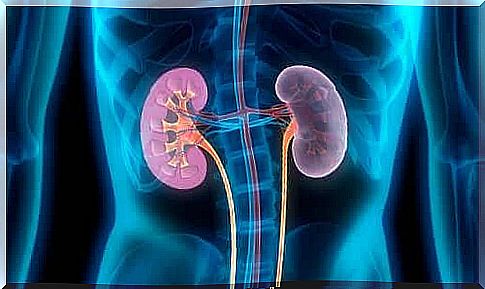Seguril – Uses, Contraindications And Side Effects

Seguril is one of the trademarks under which pharmaceutical companies market the active ingredient furosemide . This drug belongs to the family of loop diuretics.
This family of drugs can alter the transport of substances in the nephron, the anatomical and physiological unit of the kidneys. Thus, it is a drug with a very effective diuretic effect.
Seguril is a drug that doctors may prescribe alone or in combination with other drugs to treat high blood pressure. However, it is also suitable for other conditions, such as the treatment of edema due to, for example, liver or heart disease.
The functioning of the kidneys

Before learning other features of this drug, you need to understand how the kidneys work. The kidneys are the main organs of the urinary tract.
They are responsible for the excretion of waste products through the formation of urine and for balancing the internal environment of the body – homeostasis.
The nephron is the anatomical and physiological unit, as we mentioned above. It is the basic unit from which kidney tissue is formed. A nephron consists of 4 parts:
- proximal tubule
- loop of Henle
- distal tubule
- collecting duct
At the time when urine is synthesized (the main function of the kidneys), blood reaches the proximal tubule through the glomerulus. In this tube an exchange of substances takes place and some are reabsorbed while others are excreted in the urine, such as waste products and most medicines.
Then the blood and waste fluid pass through the other structures of the nephron. They exchange substances until the urine forms with the waste products and electrolytes to be removed.
The urine eventually reaches the ureters and from here goes into the bladder. This organ sends a signal to the brain when it is filled to a certain level. This signal gives the urge to urinate.
The basic principle of hypertension
Hypertension is a condition characterized by continuously elevated blood pressure. For example, a person suffers from arterial hypertension when the systolic blood pressure is equal to or higher than 140 mmHg. In addition, the diastolic blood pressure must be above 90 mmHg.
Many people do not understand the concept of blood pressure well. So it is important to explain this. In general, the heart puts pressure on the blood vessels so that they direct the blood towards the various organs of the body.
The highest blood pressure values correspond to the contractions of the heart. The lowest blood pressure, on the other hand, occurs when this organ relaxes.
Currently, arterial hypertension is one of the main risk factors for the development of cardiovascular disease. In fact, they are the leading cause of death in developed countries. A few examples of this are:
- Ischemic heart disease
- Heart failure
- Kidney and brain diseases
How does Seguril affect the organism?

Seguril exerts its effect on the loop of Henle and changes the exchange of substances. When this exchange changes, urine volume increases because the excretion of water and electrolytes is stimulated. All this leads to a decrease in the volume of extracellular fluids.
To achieve this result, furosemide can inhibit a structure that acts as a transporter of sodium, potassium, chloride and, to a lesser extent, calcium and magnesium. This prevents such electrolytes from being reabsorbed and leading to more water release.
The effects of furosemide are rapid and short-lived. It removes water and thus reduces the volume in the body. As a result, this phenomenon also influences blood pressure.
Side effects of Seguril
Treatment with Seguril is not free of side effects, as is the case with virtually all commercial drugs. The most common side effects relate to the diuretic effects. Among these reactions we can mention:
- Hypokalaemia: When doses are high, potassium levels in the blood can be greatly reduced and therefore arrhythmias can be caused.
- Hyponatremia: a low sodium level.
- Hyperglycemia: Glucose levels can rise above normal levels.
Conclusion
In summary, we can say that Seguril is the trademark of the active ingredient furosemide. It is a drug for diuretic purposes and mainly for the treatment of hypertension.
Therefore, if you have any questions about Seguril, consult your doctor or pharmacist to avoid complications. In addition, you should also inform them if you are taking other medications, as this may affect the effects.









